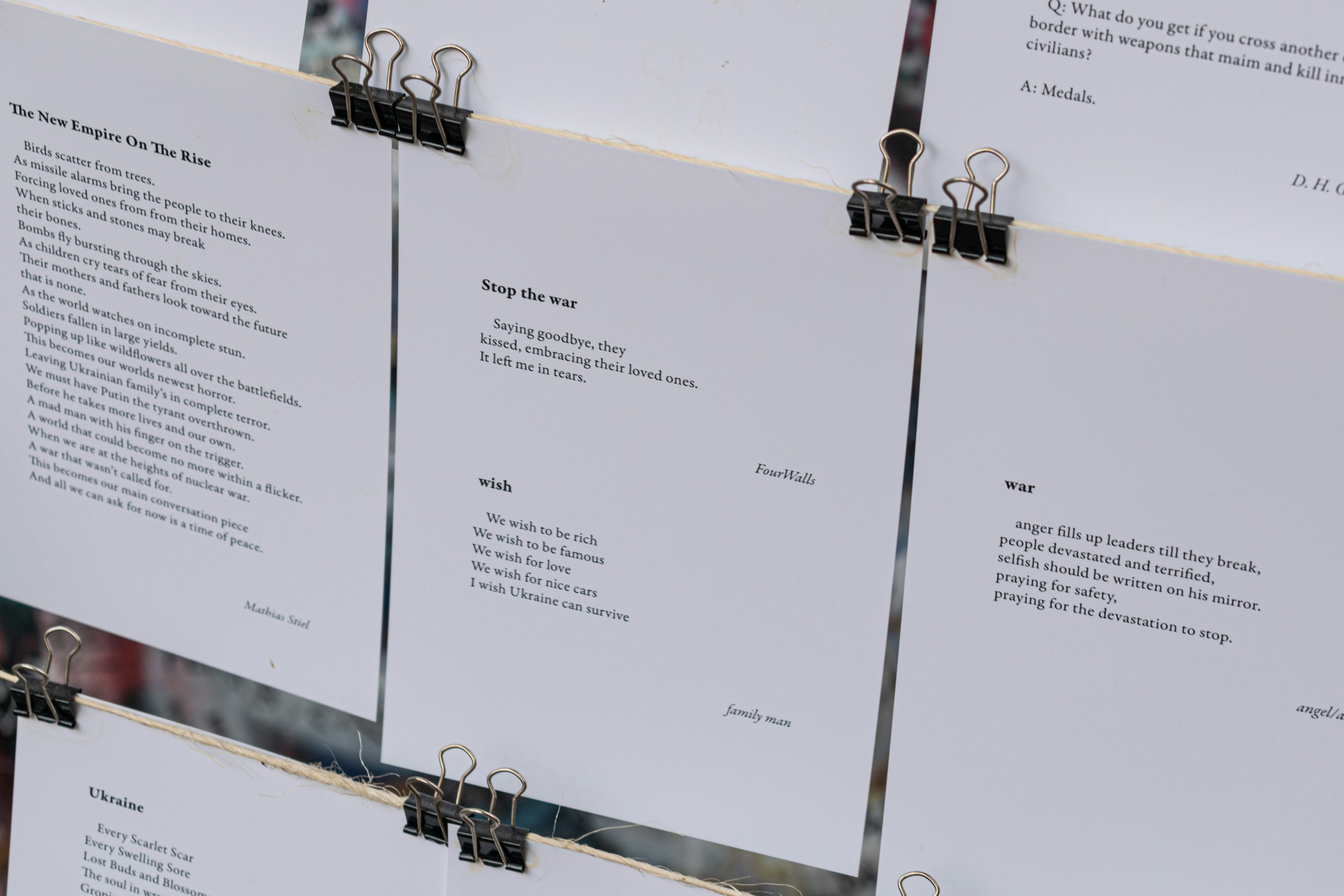Introduction to Poetry and Genealogy.
The art of poetry in Genealogy
Poetry and genealogy, while seemingly distinct disciplines, share a fundamental connection through the art of storytelling. Poetry is a powerful form of expression that allows individuals to convey deep emotions, experiences, and reflections with a notable use of language, rhythm, and imagery. Conversely, genealogy focuses on tracing family histories and lineages, providing individuals with a sense of identity and belonging. Together, they form a profound storytelling nexus, ultimately enhancing the understanding of one’s past.
At its core, genealogy is not merely a collection of names, dates, and places; it serves as a narrative that constructs the fabric of a family’s heritage. Often, these narratives are steeped in tradition and culture, which can be richly illustrated through poetry. For instance, a poet might encapsulate their great-grandparents’ immigration story into verses, weaving in personal emotions and vivid descriptions that resonate with contemporary readers. This approach allows the past to come alive, transforming factual records into evocative stories that speak to the heart.
Moreover, poetry can distill complex emotions that arise from exploring one’s ancestry. Discovering ancestral stories can evoke a myriad of feelings ranging from pride to sorrow. A well-crafted poem can encapsulate these feelings, making the genealogical journey more relatable. The cadence and structure of poetry encourage readers to engage with family histories on a deeper emotional level, allowing them to reflect on their own identities in relation to their familial legacies.
Through examples of successful genealogical poets and their works, one can appreciate how the melding of these two fields creates a rich canvas for exploration and expression. It is this potent combination of art and ancestry that not only unravels individual family stories but also unites people with the broader human experience of connection, heritage, and legacy.
Crafting Poems from Family Histories
The process of transforming genealogical research into poetry is a unique endeavor that blends fact with creative expression. To begin, one must gather family stories, artifacts, and historical contexts that serve as the foundation for poetic works. This collection can involve delving into family records, letters, photographs, and oral histories. Each piece of information not only informs the narrative but also invites emotional resonances that can enhance the poetry’s depth.
Once the materials have been compiled, the next step is to shape these gathered narratives into poetic forms. Consider the structure of the poem: will it be free verse, sonnet, or perhaps a haiku? The choice of form is crucial, as it can affect how the story is conveyed. Free verse allows for fluidity and spontaneity, while traditional forms like sonnets can lend a sense of formality and weight to the themes of heritage and legacy.
Moreover, the tone of the poem should reflect the emotional landscape of the narrative. If the family story conveys loss or sorrow, a somber tone may be appropriate. Conversely, joyful or celebratory stories could inspire a more upbeat and vibrant voice. Understanding the underlying emotions within the family histories will guide the tonal choices made in the poem.
Imagery plays a pivotal role in bringing ancestral stories to life. Utilizing vivid descriptions and sensory details can transport the reader into the historical context of the family’s experiences. For example, instead of simply stating a fact, one could evoke the sights, sounds, and feelings associated with a significant moment in the family’s past. This not only engages the reader but also deepens the connection to the ancestral narrative, making it resonant and memorable.
Finally, emotion should be woven throughout the poem, as it is the heart that often sparks the deepest connections to our ancestors. By balancing structure, tone, imagery, and emotion, the poet can effectively craft a compelling poem that honors family histories while celebrating the artistry of language.
Exploring Wallpaper as a Medium for Poetic Expression
Wallpaper, historically celebrated for its decorative qualities, presents an intriguing canvas for poetic expression. The relationship between decorative arts and literature stretches back centuries, reminiscent of a time when the artistry of walls was intertwined with the words that inspired them. Through innovative practices, wallpaper can transcend its traditional role of mere embellishment and emerge as a vibrant medium for showcasing poetry.
Utilizing wallpaper as a platform for poetry allows families to narrate their stories in a visually captivating manner. One effective technique involves incorporating printed verses interspersed with artistic designs. This can be achieved through custom printing where lines of poetry are woven into intricate patterns, creating a seamless blend of text and aesthetic. The aim is to foster an environment where words echo the sentiments of one’s heritage, transforming walls into storytellers that engage and inspire.
Artists and poets alike have explored diverse styles when integrating poetry into wallpaper design. Techniques such as calligraphy, collage, or even digital art can enhance the textual narrative, providing a unique visual cadence that complements the rhythm of the poetry. Whether utilizing bold typography, elegant script, or even typographic illustrations, the choice of style plays a crucial role in conveying emotion and meaning. A well-designed wallpaper can reflect family legacies, cultural traditions, and personal stories, encouraging conversations as visitors interact with the space.
Moreover, the practical application of poetry-adorned wallpaper allows for a personalization that is both meaningful and accessible. By selecting verses that resonate with familial ties, individuals can create a living narrative that unfolds throughout their home, encapsulating the essence of their roots in an artistic format. As we explore the intersection of art and literature, wallpaper emerges as an unexpected yet profound medium to showcase poetry, redefining how we engage with our heritage through design.
Displaying and Sharing Your Genealogical Poetry
Sharing your genealogical poetry with a broader audience can significantly enhance the appreciation of your family stories. Various avenues exist for publishing and displaying your work, and exploring these options can foster a deeper connection with your heritage. One of the most straightforward approaches is self-publishing, which allows you complete creative control over the presentation of your poetry while also catering to a niche audience interested in genealogy and familial narratives.
In addition to self-publishing, consider collaborating with local community publications or literary journals that focus on themes of heritage, culture, and storytelling. Such avenues not only provide a platform for your work but also encourage engagement with like-minded individuals who value the artistic representation of genealogical research. Reach out to organizations that spotlight family history or local genealogy societies; many often seek contributions that merge poetry and ancestry.
Online platforms also offer opportunities for sharing your poetic genealogies. Websites and social media groups dedicated to poetry or genealogy can provide a vast audience. For instance, posting short poems on platforms like Instagram or dedicated poetry forums can spark interest and discussion among readers. Additionally, consider creating a personal blog to share longer pieces or delve into the narrative behind each poem, attracting an audience keen to explore the intersection of poetry and ancestry.
Finally, organizing exhibitions or readings can provide a personal touch to sharing your work. Collaborate with local libraries, community centers, or cultural festivals to create events that showcase both poetry and genealogy. These gatherings not only allow for the display of your poems but also foster community engagement. Attendees often appreciate the chance to connect through shared narratives, reinforcing the value of storytelling in revealing familial ties and history.












